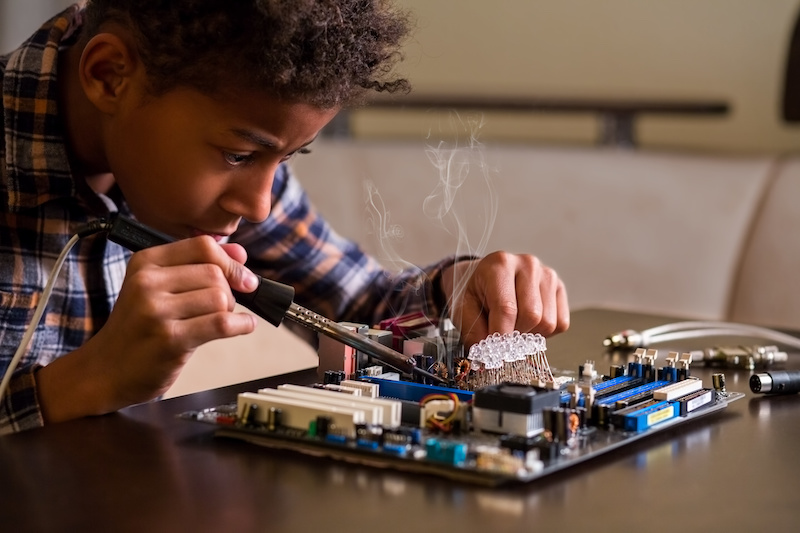 Education, Access, and Exposure
Education, Access, and Exposure
One of the most inspiring speeches I ever heard was delivered at a banquet for a nonprofit where I worked years ago. The keynote speaker was Chef Jeff Henderson, and he was telling us, from experience, why some young people reach their potential and others don’t.
One thing stood out: he said that if a young person is going to get anywhere, they’re going to need three things: education, access, and exposure.
That was about 12 years ago, and I haven’t forgotten it because it hit home. I grew up in a low-income household, and despite good intentions, my siblings and I lacked two of the three things Chef Jeff pointed out: access and exposure.
Smart but Invisible
Working with inventors over the last fifteen years, I learned that they were of a type: white, male, middle- and upper-class. Few were women, and even fewer were people of color. Eighty percent, in fact, of our clients are white males. While I applaud their successes, I wonder where the rest of the population is. I understood that what Chef Jeff said is true: while income and gender don’t determine intelligence, without access, exposure and education, an inventor may not even know where to start.
On May 1, the US Patent Office launched the “National Strategy for Inclusive Innovation,” * an initiative that aims to increase innovation among people from historically underrepresented and underresourced communities.
In their announcement, the USPTO pointed out that “Opportunities to participate in the U.S. innovation system have been historically unequal. Our most recent Progress and Potential report found that while more women are entering and staying active in the patent system, only 12.8% of all inventors named on U.S. patents are women. At the same time, a Harvard University study revealed that white Americans are three times more likely to invent than Black Americans, and that children born to parents in the top 1% of income earners are 10 times more likely to become inventors than those from families with below-median income.” (1)
Even the best students at under-resourced schools don’t have the success of mediocre students of higher income. A 2017 paper by Stanford University’s Equality of Opportunity Project found that the top 5% highest-scoring low-income kids were less likely to eventually become inventors than below-average math students from affluent families. The study’s authors called these kids “Lost Einsteins.”
The data confirmed what Chef Jeff knew: that access and exposure to achievement has more influence on a kid’s success than raw talent does.
The National Strategy for Inclusive Innovation will address educational disparities, promote inclusiveness in organizations, and increase commercialization opportunities for innovations. (This third step, we found, is a big one; without access to business conduits, too many of our inventors let their innovations die because they don’t know what to do next.)
Doing Something About It
One way to equalize opportunity is to volunteer with business incubators. We work with E for All, the Social Enterprise Greenhouse (SEG) and our local high school advising potential inventors.
For inspiration, listen to the wise words of Chef Jeff.
